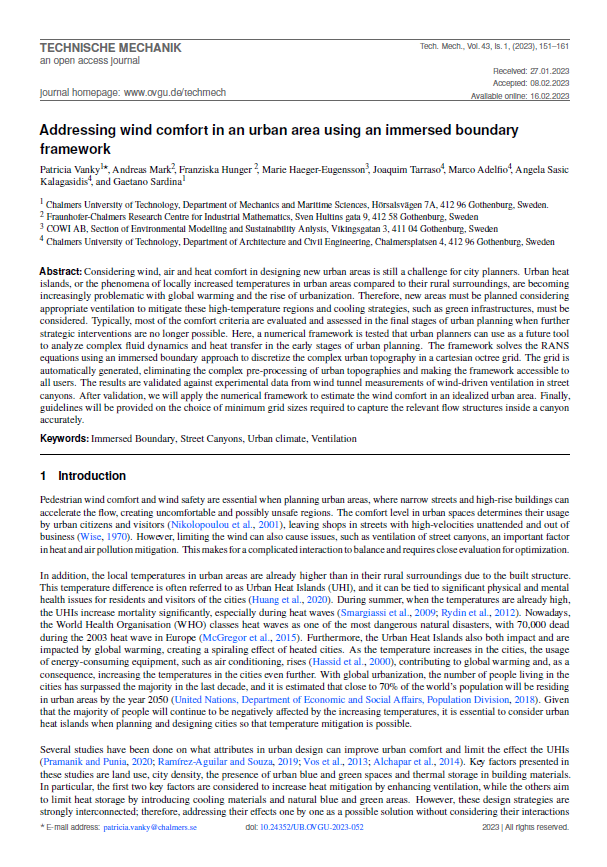Addressing wind comfort in an urban area using an immersed boundary framework
DOI:
https://doi.org/10.24352/UB.OVGU-2023-052Keywords:
Immersed Boundary, Urban climate, Street Canyons, VentilationAbstract
Considering wind, air and heat comfort in designing new urban areas is still a challenge for city planners. Urban heat islands, or the phenomena of locally increased temperatures in urban areas compared to their rural surroundings, are becoming increasingly problematic with global warming and the rise of urbanization. Therefore, new areas must be planned considering appropriate ventilation to mitigate these high-temperature regions and cooling strategies, such as green infrastructures, must be considered. Typically, most of the comfort criteria are evaluated and assessed in the final stages of urban planning when further strategic interventions are no longer possible. Here, a numerical framework is tested that urban planners can use as a future tool to analyze complex fluid dynamics and heat transfer in the early stages of urban planning. The framework solves the RANS equations using an immersed boundary approach to discretize the complex urban topography in a cartesian octree grid. The grid is automatically generated, eliminating the complex pre-processing of urban topographies and making the framework accessible to all users. The results are validated against experimental data from wind tunnel measurements of wind-driven ventilation in street canyons. After validation, we will apply the numerical framework to estimate the wind comfort in an idealized urban area. Finally, guidelines will be provided on the choice of minimum grid sizes required to capture the relevant flow structures inside a canyon accurately.

Downloads
Published
How to Cite
Issue
Section
License
Copyright (c) 2023 Patricia Vanky, Andreas Mark, Franziska Hunger, Marie Haeger-Eugensson, Joaquim Tarraso, Marco Adelfio, Angela Sasic Kalagasidis, Gaetano Sardina

This work is licensed under a Creative Commons Attribution-ShareAlike 4.0 International License.




